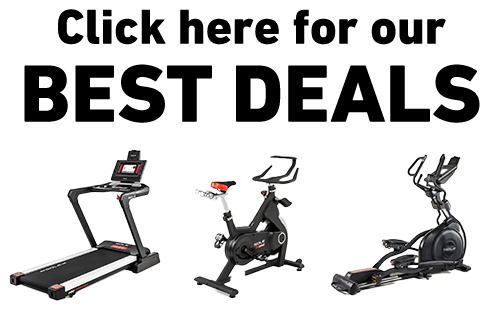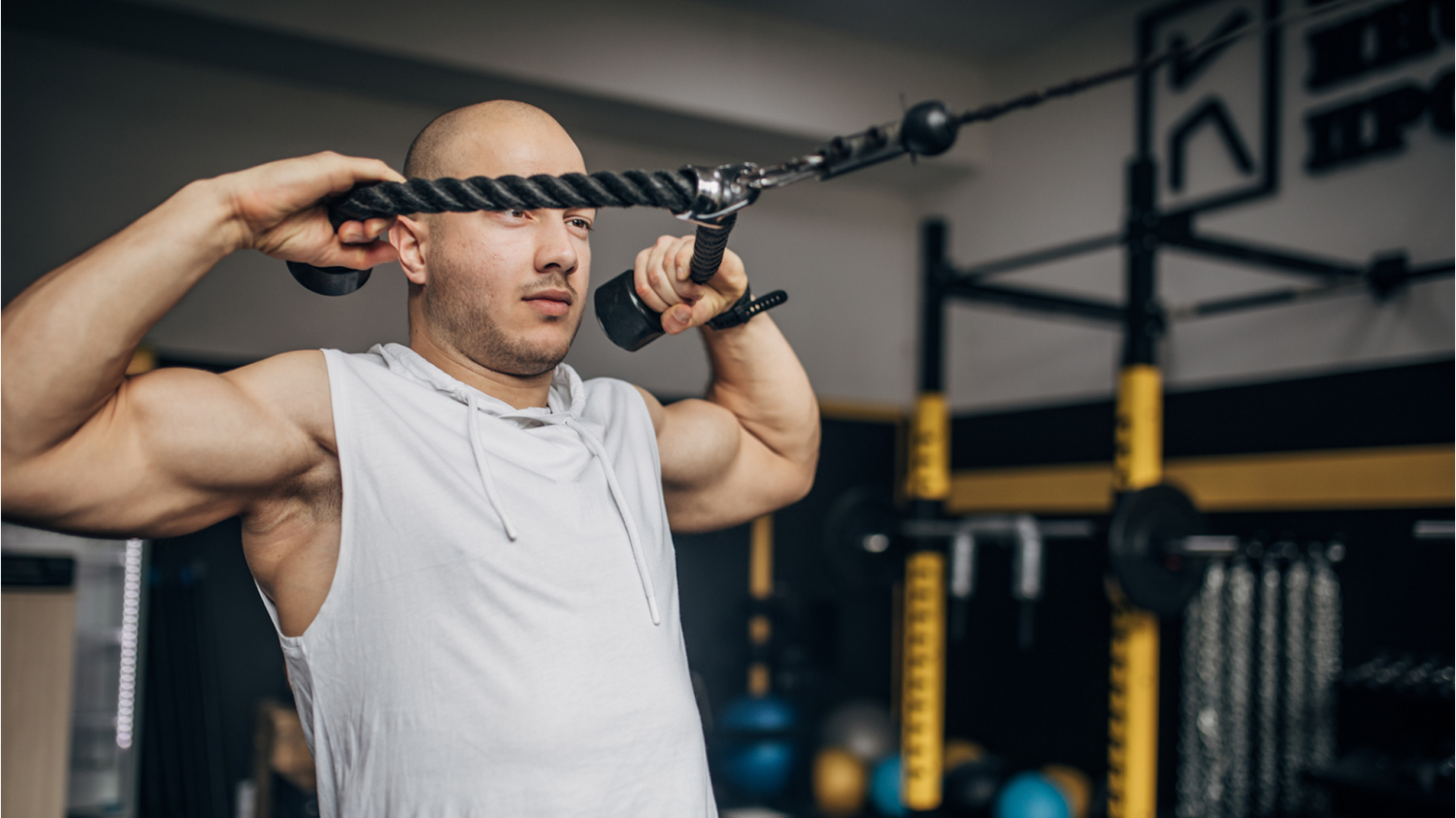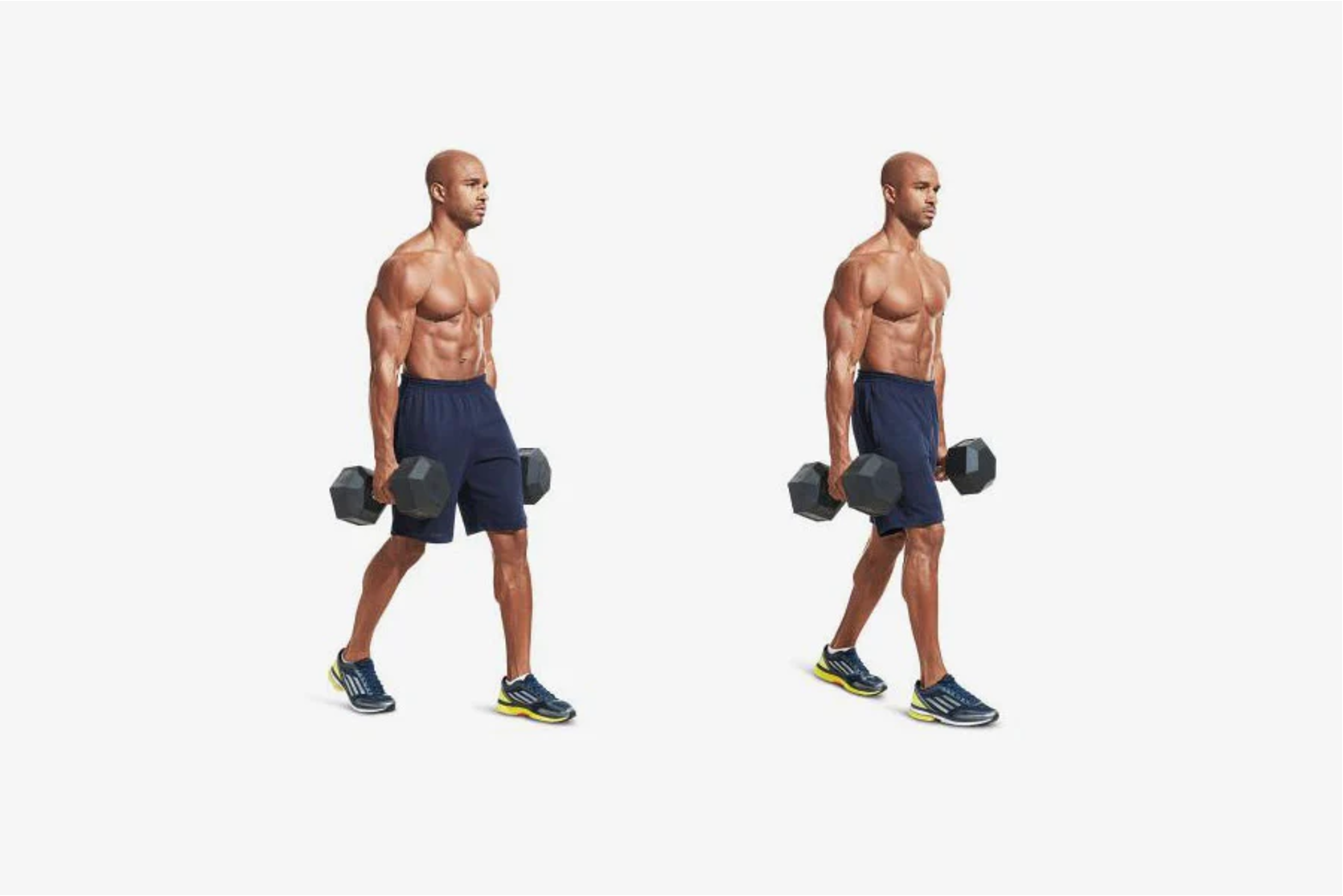Key Takeaways
- Face pulls mainly target your rear delts, traps, and upper back muscles, which helps your posture and keeps your shoulders happy.
- Rear delt flys focus on isolating just your rear delts, which makes your upper back stronger and your muscles more defined.
- Getting the form right is super important with both exercises to avoid hurting yourself and to make sure you're working the right muscles.
- Face pulls need a cable machine, while rear delt flys can be done with dumbbells or a pec deck machine
- SOLE’s SRVO trainer and adjustable dumbbells provide the perfect home equipment for mastering both exercises without a gym membership.
Understanding Face Pulls and Rear Delt Flys
Why These Exercises Matter
Both face pulls and rear delt flys target the rear deltoids, the muscles on the back of your shoulders that many people ignore. When these muscles are weak, your posture suffers and you're more likely to get shoulder injuries. Adding these exercises to your routine helps strengthen these muscles and keeps your shoulders stable and healthy.
Choosing the Right Exercise for Your Goals
When deciding between face pulls and rear delt flys, think about what you're trying to achieve and what equipment you have. Face pulls are great for overall shoulder health and fixing your posture. Rear delt flys are perfect if you want to really focus on building those rear delt muscles specifically. You might want to do both for the best results since they complement each other really well in a shoulder workout.
|
At SOLE, we're proud to offer the best exercise equipment for your home or gym. Our machines are built to meet the highest quality and performance standards, making them perfect for fitness enthusiasts at any level. SOLE Products
|
Benefits of Face Pulls
Muscle Engagement
Face pulls mainly work your rear deltoids, but they also hit your traps and rhomboids (those muscles between your shoulder blades). This full range of muscle engagement strengthens your entire upper back and improves shoulder stability.
Plus, working all these muscles helps boost your overall upper body strength, making everyday activities easier, like carrying groceries or playing sports.
Posture Improvement
One of the best things about face pulls is how they help fix your posture. We all spend way too much time hunched over computers and phones, which leads to that rounded-shoulder look.
By strengthening the muscles that pull your shoulders back, face pulls help you stand taller and reduce the risk of developing posture problems. Try doing face pulls twice a week consistently, and you'll likely notice better posture and even more confidence as you stand straighter!
The key to effective face pulls is pulling the resistance towards your face while keeping your elbows high and squeezing your shoulder blades together at the end of the movement. Try to touch your thumbs to your temples. (Image Courtesy of Men’s Journal)
Injury Prevention
Face pulls are amazing for preventing shoulder injuries. Weak or unbalanced shoulder muscles can cause all kinds of problems, from minor aches to serious injuries.
Face pulls help stabilize your shoulder joint and lower your injury risk. This is super important for athletes who do overhead movements, but it's valuable for everyone. Even if you just lift weights casually, face pulls can keep your shoulders healthy and pain-free.
Benefits of Rear Delt Flys
Strength Building
Rear delt flys are excellent for building strength in your shoulders and upper back. This improved strength carries over to other exercises like rows and presses.
Upper Back Development
The upper back often gets neglected in many workout routines, but it's vital for overall strength and stability. Rear delt flys directly target this area, helping your muscles grow and improving your posture.
Isolation Advantages
The biggest benefit of rear delt flys is how they isolate the rear deltoids. This laser-focus lets you really develop these muscles without bigger muscle groups taking over.
If you want well-defined, balanced shoulders, rear delt flys are essential for your routine. (Image courtesy of Allison Ethier)
Proper Form for Face Pulls
Step-by-Step Guide
Here's how to do a face pull correctly:
- Start by setting the cable pulley at upper chest level.
- Attach a rope handle to the pulley and grasp it with both hands, palms facing each other.
- Stand with your feet shoulder-width apart and pull the rope towards your face, flaring your elbows out to the sides.
- Squeeze your shoulder blades together at the end of the movement.
- Slowly return to the starting position and repeat.
Equipment and Setup
For face pulls, you'll need access to a cable machine with a rope attachment. If you don't have access to a gym, you can use resistance bands anchored at a high point to mimic the same motion.
Equipment Options
Face pulls require a cable machine, which you can find in most gyms. You can also use resistance bands at home by anchoring them to a stable high point. This way, you can still perform the exercise effectively without needing bulky gym equipment.
Rear delt flys offer even more versatility. You can perform them with dumbbells, resistance bands, or on a pec deck machine. Dumbbells are a great choice if you prefer free weights and want to focus on balance and control. If you have access to a pec deck machine, it’ll give you a guided path that can help beginners maintain proper form.
Proper Form for Rear Delt Flys
Technique
To do rear delt flys correctly:
- You can either sit on a machine or stand/sit with dumbbells.
- If using dumbbells, bend forward slightly at the hips.
- Keep a small bend in your elbows; don't lock them out.
- Raise your arms out to the sides, like you're spreading your wings.
- Squeeze at the top for a second.
- Lower back down slowly and repeat.
Maintaining Correct Posture
Keep your back straight and core engaged during the exercise. Don't swing the weights or use momentum; the movement should be controlled. Focus on using just your rear delts to lift the weight, not your traps or back muscles.
Equipment Options
Rear delt flys are super versatile! You can do them with:
- Dumbbells
- Resistance bands
- A pec deck machine (just sit facing the opposite direction)
Dumbbells are great if you like free weights and want to work on balance and control. (Image courtesy of Performance Lab)
Which Exercise to Choose?
Goals and Fitness Levels
Your choice between face pulls and rear delt flys should depend on what you're trying to achieve. If your main goal is better posture and healthier shoulders, go with face pulls. They work multiple muscles and promote shoulder stability.
If you're more focused on building muscle and defining your shoulders, rear delt flys are your best bet. They really isolate the rear delts, helping you develop muscle size and symmetry.
Exercise Accessibility
Think about what equipment you have access to when choosing. Face pulls need a cable machine or resistance bands, while rear delt flys can be done with dumbbells or on a pec deck machine. If your equipment is limited, pick the exercise that works with what you have.
Program Integration Tips
Including both exercises in your routine gives you the most complete shoulder workout. You might alternate between face pulls and rear delt flys on different workout days for balanced muscle development. Try adding them to your upper body or shoulder-specific workouts for the best results.
Build Balanced Shoulders at Home with SOLE Premium Equipment
SOLE's innovative SRVO and adjustable dumbbells eliminate the common excuse of needing a gym for effective shoulder training. Now you can build strong, injury-resistant rear delts right in your living room.
The innovative SOLE SRVO All-in-One Trainer is a game-changer for face pulls, providing smooth, consistent resistance that mimics high-end cable machines perfectly. Its adjustable positioning lets you hit your rear delts from multiple angles, something even commercial gyms can't always offer.
For rear delt flys, you'll love how the SW180 Adjustable Dumbbells let you quickly change weights between sets without cluttering your space.
Need to drop down in weight after fatigue sets in? Just twist the dial instead of searching for another pair of dumbbells. The balanced weight distribution prevents the awkward wobbling that cheap dumbbells cause during precise movements like rear delt flys.
What makes these exercises feel good with SOLE equipment is the difference in quality that you'll notice immediately.
For perfect form, pair your dumbbells with the SW100 Adjustable Dumbbell Stand. At counter height, it doubles as the perfect seat for supported bent-over rear delt flys, helping you maintain that critical hip hinge position without lower back fatigue. The integrated tablet holder lets you follow along with guided workouts from the SOLE+ App, ensuring your form stays on point.
Ready to build bulletproof shoulders at home? Check out the complete SOLE strength collection!
Frequently Asked Questions (FAQs)
Can beginners perform face pulls and rear delt flys?
Absolutely! Beginners can definitely do these exercises, but focus on getting the form right first. Start with lighter weights or resistance bands until you're comfortable with the movement. Once you're confident in your technique, you can gradually add more weight.
How often should I incorporate these exercises?
Adding face pulls and rear delt flys to your routine 2–3 times per week is perfect for most people. This frequency gives your muscles enough work while allowing time to recover. Make sure to have at least one rest day between sessions so your muscles can repair and grow.
Which exercise is better for shoulder stability?
Face pulls are generally better for enhancing shoulder stability because they engage multiple muscles around the shoulder joint. This engagement helps strengthen the stabilizing muscles, reduce the risk of injury, and improve overall shoulder health.
Do I need special equipment for these exercises?
Face pulls usually need a cable machine or resistance bands, while rear delt flys can be done with dumbbells or on a pec deck machine. If you don't have access to a gym, resistance bands are a great affordable option that lets you do both exercises at home.
Which SOLE equipment works best for my home rear delt training?
The SRVO All-in-One Trainer provides the smoothest face pull experience with its dual-motor resistance system, allowing you to adjust tension in 1-lb increments as you progress. For rear delt flys, the SW180 Adjustable Dumbbells deliver the perfect balance between convenience and effectiveness. Their quick-adjust mechanism lets you drop weight when your form starts slipping without interrupting your workout flow.







Leave a comment
This site is protected by hCaptcha and the hCaptcha Privacy Policy and Terms of Service apply.